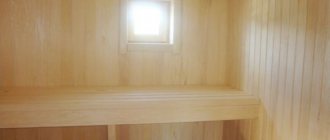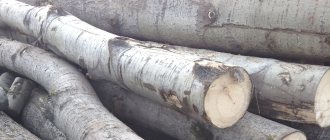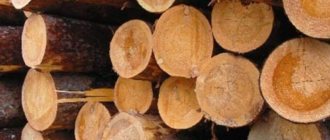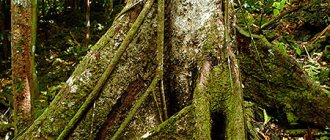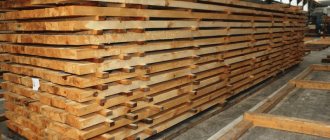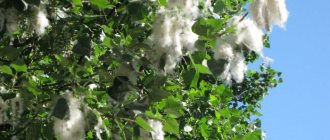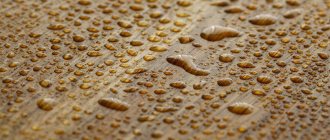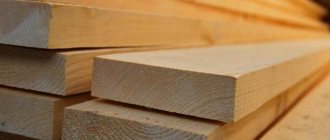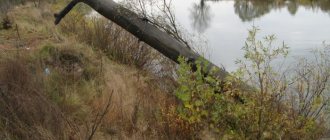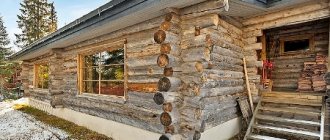Despite the emergence of new synthetic and polymer materials, traditional raw materials, such as natural wood, do not lose their relevance and are actively used in various areas of our lives. And the need for its production is constantly growing. However, compared to other trees, aspen, which is one of the most common woody plants of the Eurasian continent, seems to be a little underestimated and undeservedly “pushed into the shadows.”
Baths and log houses made of aspen
One of the characteristic qualities of common aspen is the high hygroscopicity of its wood, which is why it is often used for the construction of baths and wells.
The main advantages of bathhouses built from aspen timber include:
- Durability and reliability. With high-quality drying of aspen timber used for the construction of a bathhouse, this material gains strength comparable in strength to concrete. Moreover, these characteristics improve even more over time.
- Good moisture resistance. Unlike many trees of other species, aspen does not rot or deteriorate when exposed to water.
- No resinous secretions. Thanks to this, aspen baths do not require additional interior finishing.
- Pleasant unobtrusive aroma. The wood of this tree has a light and pleasant smell, which does not change its intensity when this material is heated.
- Low price. Due to the low cost of raw materials (for example: a cubic meter of unedged aspen board costs approximately 4000-4300 rubles), the construction of bathhouses from aspen is very inexpensive.
- Presence of bactericidal qualities. Even in ancient times, people noticed that the water in wells built from aspen remained clean for a long time, did not rot or bloom, so dishes and utensils were also made from this wood. And in the bath, thanks to the heating of the wood, these qualities were enhanced even more.
Photos of bathhouses and log cabins built from aspen timber
Bathhouse No. 1
Bathhouse No. 2
Log house No. 1
Log house No. 2
Log house No. 3
Negative properties of aspen
Often professionals even refuse to work if they know that they will have to deal with aspen. After all, many properties of wood of this species are negative.
First of all, it is worth mentioning such a negative property as the excessive amount of moisture contained in the structure. The core of the aspen trunk, as a rule, rots because of this. Moreover, the process of decay occurs even before the tree is cut down. But this is just the beginning of all the problems. When delving deeper into the processing process, it turns out that only the top of the tree trunk is suitable for this. It can reach a length of four meters. The same moisture contained in the structure makes aspen wood dry. As a result, one edged board has a very large weight.
In any case, if a person chooses aspen wood for building his house or for renovation work, then more than half of the purchased boards will simply have to be thrown away, since they will be completely unsuitable for work. Many of them will be crooked. And only a small percentage of aspen boards can be subjected to further processing.
At home
Despite its ubiquity (aspen can be found throughout Europe and, partly, Asia), its low cost and ease of processing, aspen is rarely used for the construction of houses and farm buildings.
For a long time, people have treated it with some distrust, considering it a weed and unnecessary plant. In addition, according to ancient legend, aspen was the very tree on which Judas Iscariot, who betrayed Jesus Christ, hanged himself by selling him for thirty pieces of silver, so it was believed that the wood of this tree has negative, dead energy.
These beliefs can be treated differently. However, there are very real arguments against using aspen wood as a building material for the construction of houses.
These include:
- Insufficient quality of raw materials. Indeed, in order to find a timber suitable for the construction of a log house, you will have to spend a lot of time. As a rule, no more than 10% of the material from this tree has the required characteristics.
- Susceptibility to shrinkage. Since aspen has high natural humidity, its wood can be used for construction only after thorough drying. However, during this process it is greatly turned out and twisted.
When building houses from aspen, the quality of the timber used is of decisive importance, especially its humidity, which should not exceed 20%. Some experts recommend using aspen only for laying the first crown of a house made of timber, since it resists rotting well and is characterized by increased strength, and the frame itself should be made of pine.
This move will reduce the cost of construction, since the cost of selected quality aspen timber is quite high - from 10,000 per cubic meter. meter and above.
Where do aspens grow?
The aspen genus grows in almost all regions of Asia, Europe and northern Africa; they can be found in almost all regions of Russia, China, Mongolia or Kazakhstan.
They can be found both in mixed forests next to coniferous trees and form aspen forests, where mushroom pickers love to gather.
- The tree grows primarily in forest-steppe or forest zones, but has the ability to grow even in the mountains, at an altitude exceeding 2000 m.
- A cold, dry climate with little precipitation and dry soil will be comfortable for aspen to live.
- The tree also needs good lighting.
In such conditions, the tree reaches its maximum growth rates and can live up to almost a hundred years.
In dark places without sunlight, its crown quickly withers and the plant dies.
Eurolining, floorboard, unedged aspen
For the interior decoration of baths and saunas, euro-lining made of aspen is used, which is distinguished by its attractive appearance, good moisture resistance and durability.
Its advantages:
- Elegant white color and almost complete absence of knots, due to which a room decorated with this material looks very cozy and neat.
- Not susceptible to rotting and cracking during operation. In a humid environment, euro-lining made from aspen feels excellent, and when dry, it does not change its shape or crack.
- Thanks to the increased dimensions of the groove and tongue, the aspen lining is firmly and reliably fixed to the base, which avoids the occurrence of cracks as a result of constant exposure to humidity and high temperature.
Its dimensions: working width without tenons – 88 mm; width with spike – 96 mm; thickness – 12.5 mm. The length range of the planks is from 1 to 3 meters.
According to a number of characteristics and external qualities, aspen eurolining is divided into 4 grades:
- “EXTRA”, characterized by increased quality, without knots or defects.
- “A”, “B”, “C”, differing from each other by the presence of a certain number of knots and other defects per linear meter.
The video shows aspen lining and its features:
In addition, floorboards are also produced from aspen, which are of fairly high quality and are suitable for finishing baths and saunas. Using a five-point rating scale, this material can be rated “excellent” for its environmental friendliness, visual appeal and durability.
Aspen floorboards are characterized by good hygiene and high wear resistance, so they can be used for a long time without additional repairs or treatments.
In addition, when heated, an aspen floorboard does not burn your feet, which allows it to be used as a very practical and convenient material for finishing the floors of steam rooms and bath rooms.
To perform rougher, “rough” construction work, unedged aspen boards of natural moisture are used. Most often it is used for the manufacture of various types of flooring, as well as the construction of sheathing, elements of load-bearing structures and other works.
A distinctive feature of this material is low cost with high strength and durability.
Flowering and fruits of the aspen tree
Pollination of trees occurs more by wind than by insects, and the flowering period falls at the end of April and the first days of May. The earrings of male and female trees are different. If in the former they are brighter and red in color, then in the latter they are more unremarkable and green.
As for the fruits of aspen, they look like small oval-shaped boxes in which seeds are stored.
During the ripening period, these capsules crack, releasing seeds, which, before falling to the ground, travel through the air, resembling cobwebs or snow in large quantities (it is to this “snow” or fluff that people are often allergic).
The very small size of the seeds allows them to travel long distances with the help of the wind, due to their lightness and mobility. Once in the soil, the seeds begin to germinate in the summer.
Doors
In addition to being used as a practical and reliable material for the interior decoration of saunas, aspen wood is used to make durable and inexpensive sauna doors.
Door leaves made from this wood have virtually no cracks and do not change their shape and geometry during operation, under constant exposure to high temperatures and humidity.
Their main advantages are:
- Affordability.
- No need for additional care and ease of working with the material (Aspen does not emit resins and can be easily processed with any cutting tool).
- Lightness, high moisture resistance, thanks to which the door made of aspen does not allow valuable and healing steam to escape from the steam room.
Since the texture of aspen is not particularly expressive, to improve the appearance of the door it is often coated with various stains and varnishes. The door leaf is usually made from selected grade wood, with a minimum of knots and defects.
To make the box, simpler and cheaper raw materials are used, since it is closed with a platband and does not stand out in the interior.
Disadvantages: darkening over time and the possibility of hidden rot.
Photos of log houses and doors made of aspen
Doors No. 1
Doors No. 2
Doors No. 3
Doors No. 4
LiveInternetLiveInternet
Quote from Albina_Arsemova's message
Read in full In your quotation book or community!
VALUABLE TREE - ASPEN!
“It just so happened that the aspen was unlucky in oral folk art. In songs, sayings, proverbs and even riddles you rarely find kind words related to aspen. “Maxim was basking around the aspen trees,” they said about a rash man who, for unknown reasons, allegedly mistook the autumn foliage of an aspen tree for a fire. What, they say, to take from aspen, aspen is aspen - a worthless tree.
If you asked a riddle: “One damned tree makes noise without wind,” then anyone, without hesitation, could answer: “Aspen.”
Another riddle, less evil, asks: “No one is scared, but trembles.” Indeed, aspen leaves tremble even in calm, clear weather. Dense, leathery, hanging on long petioles, they are like thousands of sensitive miniature weather vanes.
Foresters call aspen Russian poplar, and this is no coincidence - poplar is a direct relative of aspen. In botany, aspen is known as “trembling poplar.”
Aspen firewood burns poorly and produces little heat. Aspen is harvested for firewood only in extreme cases. But as an ornamental and building material, aspen wood is very valuable. Aspen is a sapwood species. It has white wood with a greenish or slightly bluish tint. Wood whiter than that of aspen cannot be found in other trees in the middle zone. On the polished surfaces of all three sections, the annual layers are clearly distinguishable due to the narrow light yellow strip running between them. The annual layers are distinguished more clearly after wetting the surface of the dranesin with water.
Aspen wood has many narrow core rays, but it is impossible to distinguish them in tangential and transverse sections. On a radial split, the rays are visible in the form of many small shiny stripes. Here and there on the wood there are yellow and white spots - core repetitions. Aspen has light and soft wood, straight-grained, with a uniform structure. It dries out moderately, cracks little and splits well. What is made from aspen? Matches. Here she is still unrivaled.
This preference for aspen when making match straws is not accidental. Straight grain wood splits easily. The straightness and uniformity of aspen make it possible to use special machines to obtain the finest shavings, from which, like straw, all kinds of summer hats are woven. Artificial flowers are made from paper-thin shavings painted with bright aniline dyes.
The main shavings are also used as packaging material. Thick shingles are used to make shells for sieves, sieves and beakers. Light and durable dishes have long been made from aspen. It is perfectly processed on a lathe and is easy to cut. To make a carved ladle or spoon, craftsmen steam the blanks in a boiling hearth. After this, it can be cut with sharp tools as easily as a turnip. Some masters claimed that in dishes made from aspen wood, cabbage soup would not even turn sour for a long time and pickles would not sour. Apparently, there are some substances in wood that kill putrefactive microbes. And it’s not for nothing that in some places housewives put aspen logs in sauerkraut.
In this regard, dishes made from aspen wood are preferable to linden wood. Just like linden, aspen is good for decorative carvings. The homogeneity of the wood allows you to make cuts in almost any direction without chipping or removing it. Aspen wood is also good because it lasts for a long time in water. Therefore, from ancient times in Rus', well log houses were knitted from aspen logs.
Even in areas rich in timber, they preferred to build bathhouses from aspen, believing that they last longer for a fragrant and light bunk, and besides, aspen is not afraid of dampness, and there is always an abundance of it in the bathhouse.
Of course, such a preference for aspen could only exist in those lands and areas where aspen trees with straight trunks and healthy wood were more common.
Aspen wood does not care about prolonged autumn rains or stormy summer downpours. That is why the domes and roofs of the famous northern village churches were covered only with aspen ploughshares and planks. Stone buildings were also covered with ploughshares, small figured planks made of aspen.
Where wood products need to withstand moisture, they are most often made from aspen. In many places, fishermen make light one-tree boats, or aspen boats, from thick aspen trunks.
First, they hollow out the middle of the log, fill it with water and steam it by throwing hot stones into the water. Then the sides, which have become flexible, are pulled apart using spacers.
Aspen wood swells easily. This property is considered negative, but not always. Without it, cooperage products could not exist: tubs, barrels, vats, tubs and many others. When the wood of the staves that make up any cooperage product swells, a high joint density is achieved. Freshly cut aspen wood has a pleasant tart smell. The smell can tell you about the condition of the wood. If the wood begins to smell like vanilla, it means it is rotting. At chemical industry enterprises, artificial vanillin is produced from rotten aspen wood, which is not inferior to natural vanillin extracted from tropical vanilla pods.
Standing aspen is short-lived, as it is quite easily affected by heart rot. Over time, the inside of the tree trunk becomes rotten. And if it is not cut down in time, the wood will lose its industrial value, and the tree will die after some time. Therefore, for economic needs, aspen is cut down at the age of 40-45 years, while pine and spruce are cut at 100-120 years of age. Wood affected by putrefactive fungus does not lose its mechanical and physical properties at the first stage of decay. It can be planed, sawed, sanded, polished, tinted and painted like regular healthy wood.
The texture pattern formed in the wood as a result of the activity of the fungus can be so unusual that it is difficult to believe that it is aspen wood. Sometimes it resembles fancy drawings on polished sections of ornamental stones. Many people don’t realize that this beauty is simply lying under our feet, turning into dust over time. Try to cut the iodine lying around with your feet on an aspen trunk. From patterned wood you can make original boxes and caskets, as well as all kinds of decorations. Rectangular plates with plot drawings are inserted into frames, obtaining complete originality and surprises created by the very nature of the picture. If you saw off a small ridge from the trunk of a fallen aspen, the wood of which in the middle of the trunk has turned into rot, remove the bark from it and clean out the rotten wood with a stick hewn at the end in the form of a spatula, you can get a hollow wooden cylinder.
Is it possible to somehow use this hollow volume, prepared by nature, but doomed to death in the forest? In the old days, peasants made various dishes, nesting hives, birdhouses and kubels (original suitcases for storing and carrying clothes and linen) from hollow aspen trunks.
The technology for making dishes was quite simple. So-called morning grooves were cut from one edge of the wooden cylinder and a bottom was cut out of a board of appropriate size. Having steamed the edge of the cylinder, the prepared bottom was inserted into the mornings. Sometimes, for strength, wooden or iron hoops were stuffed onto such dishes. The forest inhabitants themselves - birds and wild bees - told man how to use a hollow tree. After all, while the tree was standing, it served as a reliable shelter for them. Trying to attract useful birds to his home, the man began to hang nest boxes next to it.
Reliable and comfortable nest boxes for a wide variety of birds can be made fairly quickly in the spring before their arrival. To do this, you need to saw off a suitable ridge, knock out the dust from it with a stick or chisel, attach a slab on top instead of a roof, and insert a bottom from below. Then cut the entrance, and the nest is ready. And you need to select a ridge with a ready-made hole in the place of the former knot. It is convenient to make such nests right in the forest and hang them right there, nearby. A saw, a chisel and an ax are all the tools you will need in a forestry workshop.
The fertile material that lies idle under your feet can be useful for making many original things. If you cut an aspen log into low logs and attach the bottom to the bottom, you can get very convenient and reliable flower pots. They will become more expressive if they are decorated with simple triangular-notched carving, since aspen is beautifully cut. Making cactus boxes is even easier. Split a ridge about a meter long into two halves with an ax so that the plane of the split is slightly offset from the center. A large half is used, which is cleaned inside. Then two identical boards are nailed from the ends. They will simultaneously serve as side walls and racks. To prevent the wood from rotting from contact with damp soil, the inside of the box must be burned with a blowtorch or gas torch. For a floor vase, you need to try to find a hollow aspen trunk that has a beautiful bend with sagging and hollows. If you use your imagination a little, you can come up with many simple, original and useful things.
Aspen roots are of considerable interest to the woodworking artist. Even in the last century, some Russian craftsmen used their twisted wood with an iridescent, mother-of-pearl sheen for various kinds of decorative work.
The same twisted wood is found on the trunk around large knots. It can be successfully used when creating miniature decorative works.”
Red bird of happiness
Furniture panels made of aspen
People have been using furniture made from natural wood since ancient times. And today it does not lose its relevance and popularity. For its production, wood of various types is used, including common aspen.
Depending on the size of the pressing equipment used, panels, facade elements, decorative panels, etc. are made from it. In this case, the initial wood raw material, which is a 30 mm board with a moisture content of 80%, undergoes pre-treatment: it is impregnated and dried for 70 hours to a moisture content of 10%.
Choosing what is best for a bath...
To understand what you are dealing with, it is correct to compare different options. We have already written about the popular dilemma of choosing between linden and aspen, now we will consider two other pairs that are compared a little less often.
Pine or aspen
Be prepared for the fact that there will be no clear answer. Because first of all, you need to look at the quality of the same pine and the same aspen - there are regions where one is better than the other.
By the way! According to tradition, pine was usually used to build a house, and aspen - a bathhouse.
But it is always difficult to obtain good, functional aspen without rot inside ; there is a lot of defects at the selection stage. Here, by the way, is a big piece of advice for the owner of a future bathhouse - check each log yourself when purchasing - so that the core is intact, it suffers primarily from rot.
You need logs - 15-20 centimeters or more, so be careful - trees of this thickness most often have a problematic core.
ON A NOTE! Rotting aspen is accompanied by the smell of vanilla - if you smell it, put the log aside from healthy ones.
In this regard, pine is less susceptible to rot and pests, but it swells greatly from water. And resin is a problem in a steam room.
pure pine without interior decoration of a steam room , so there is no need to say which is better: a bathhouse made of aspen or pine - the choice lies between a pine bathhouse with aspen clapboard inside the steam room or an aspen bathhouse without clapboard trim.
If you prefer a log house in its pure form , if there is no need for additional insulation, then make it from aspen - everything will be fine, it will only become harder later, water “hardens” it.
If there are problems with a good aspen, if you know that a poplar in instead of it (they are relatives, the wood is very similar, but its quality is different, aspen grows in a swamp, hence its resistance to water, poplar does not have it), then take a good construction pine , build a log house from it, and protect yourself from resin with a clapboard made of aspen or linden (or other hardwood). See more information about pine here.
Alder or aspen
But here it’s more interesting - both species are deciduous, both are suitable for finishing a pair of rooms. As for a log house, aspen is definitely suitable for its construction, and alder is considered a good interior(!) material - its characteristics are similar to linden.
Therefore, we would risk recommending the following: focus here on the quality of the material. Since there is little good aspen, and specifically in your region there is good alder, you can build from it, but on condition that the lower crowns are made of oak or larch (contact with water and soil for alder leads to rotting).
BY THE WAY! The rule of the lower crowns, that is, making them from more durable and rot-resistant species, can be applied to aspen - only you will do it better.
In addition, the areas under the windows - this is a reason to take care of additional protection of these areas or to abandon windows as much as possible, leaving only the necessary ones.
In general, in the question of what is better for a bathhouse: alder or aspen, we place our bet on aspen, relying in this, as you already understand, on tradition.
Lumber
Since aspen wood raw materials have a number of specific characteristics, they cannot be classified as universal materials that are widespread in construction and industrial production. Therefore, lumber from this tree, for the most part, has limited use.
One of the advantages of lumber is its low cost, however, this only applies to “rough” wood, which has a fairly large rejection rate of about 60-80%. For exterior work, the upper part of the tree is used, since its middle often rots during growth.
Lumber is subject to severe shrinkage and changes in volume and weight during drying, so it is not of great value as a building material.
Properties and characteristics
Aspen belongs to the extensive genus of poplars, the willow family. According to the structure of the trunk, this is a coreless, diffusely woody tree species. In Russia, this tree is found everywhere in the European and Asian parts of the country, from deciduous forests of mid-latitudes to tundra zones.
This tree grows up to 150 years, but the cause of its death is often not age, but rot that affects the core of the trunk, so trees between 30 and 50 years old are usually chosen for industrial felling. During this time, the tree reaches a height of 35-40 meters.
Aspen wood is dense, with poorly visible growth rings, and uniform in structure. The moisture content of the wood in the central part is lower than in the peripheral areas of the trunk. The color of the wood is white, grayish-white, sometimes greenish. In the cut, it is impossible to notice the rays emanating from the center. For some decorative work, such wood is valuable precisely because of its uniformity. After staining or painting, the structure of the wood remains uniform and does not reveal any structural elements.
The moisture content of a freshly cut tree is about 82%, while the maximum moisture content of this wood (when soaked) reaches 185%. With high atmospheric humidity, aspen quickly absorbs water, but also quickly loses it when drying, which is a positive quality.
In terms of resistance to biological factors, wood belongs to the lowest, fifth class (according to the ISO EN 350-3:1994 standard).
There are a total of five classes in the above standard. The first class of resistance includes, for example, Indian teak and Australian eucalyptus. Larch and oak are classified as class 2 in terms of wood stability. In Russia, the resistance of a tree to the effects of fungi and mold is determined in dimensionless conventional units. According to the Russian classification, resistance to fungi is 1.2 units for mature wood, and 1 for aspen sapwood.
Wood processing
Being a fairly common and accessible natural raw material, aspen lends itself well to various types of mechanical processing: sawing, cutting, peeling, planing, etc. The largest percentage of material entering processing falls on plywood-match, pulp and paper, container production and sawmilling.
Since aspen wood survives peeling and planing operations well, it is successfully used for the manufacture of plywood and matches. At the same time, it is especially highly valued in match production.
Due to the absence of resinous and aromatic secretions, aspen wood is suitable for the production of barrels and boxes. Also, this material, which has a natural white color and a sufficient length of fibers, is used for the manufacture of paper and cardboard, fiberboard, particle boards, etc.
In addition, after appropriate processing, aspen wood can serve as a raw material for hydrolysis-yeast production, the production of a petroleum fuel substitute and other purposes.
The video shows the processing of aspen waste from a match factory on a granulation line:
Finishing with aspen lining
A good alternative to building an aspen log house is finishing it with clapboards made from this type of wood. In this case, you can choose more resistant wood for the log house or even build a bathhouse from less traditional materials - frame, brick, foam blocks.
Aspen sauna lining is intended primarily for steam rooms . For the rest, you can use any other breed. Which, by the way, is very convenient, because we haven’t heard about logs made of different types of wood for rooms, and there are no such problems with finishing - you can choose any characteristics to suit your taste.
So what we're saying is that outside of the steam room, you don't need to clap the walls with aspen unless it's part of the design plan. After all, everything has its advantages and disadvantages
Aspen lining: pros and cons
Light-colored, fine-fiber lining, its hardness varies significantly depending on the degree of shrinkage - from soft, like linden, to such that the tool bounces off. However, the latter is more about logs, and thin lining in any condition can be cut.
The main disadvantage of aspen lining for a bathhouse is that it darkens over time. This happens with all wood that is regularly moistened, but in aspen it is more pronounced. If you compare it with linden, for example.
Aspen darkens from water
But this is a decorative flaw inherent in this particular wood. By the way, you can always get rid of it using chlorine bleach - special for baths or regular “Whiteness”, which is a solution of sodium hypochlorite.
with water-repellent impregnations based on linseed oil or beeswax can protect against darkening It is possible to use other oils, but not sunflower oil, of course. We wrote about wood bleaching here. We also recommend that you study the material on lining processing or watch the video version below.
The advantages of aspen lining in a steam room are that it does not emit resin, is available at the lowest price among other species, rooms decorated with it look more spacious because it is light (at least at first

